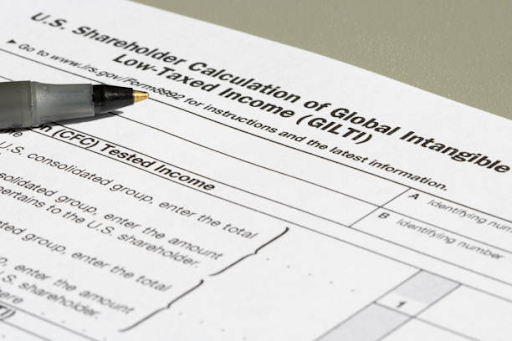
In a significant development in mid-September, the Treasury Department and IRS unveiled proposed regulations addressing the treatment of Global Intangible Low-Taxed Income (GILTI). Stemming from the Tax Cuts and Jobs Act (TCJA), the GILTI rules act as a global safeguard within the U.S. tax framework, specifically targeting large corporations with at least a 10 percent ownership in a controlled foreign corporation (CFC). This article delves into the nuances of the proposed regulations, shedding light on the GILTI provisions, their implications, and the ongoing evolution of tax policies.
The Genesis of GILTI Rules
The genesis of GILTI rules lies in the broader tax reforms introduced by the TCJA. Under the new tax system, U.S. shareholders gained the ability to claim a 100-percent dividend received deduction for foreign-source dividends received from a CFC. However, policymakers recognized the potential vulnerability of the U.S. tax system to base erosion and profit shifting due to the exemption for foreign-source dividends. In response, the TCJA incorporated the GILTI rules as a countermeasure, forming an additional layer of protection against undesirable tax practices.
Harmonizing with Subpart F
The GILTI rules work in tandem with the established Subpart F regime, which identifies a CFC and assesses if it generates unfavorable income abroad, linked to base erosion or profit shifting. GILTI introduces a second layer of defense, obliging U.S. shareholders to evaluate if they are subject to tax on a CFC's global intangible low-taxed income. Income tainted as Subpart F or GILTI does not qualify for the 100-percent dividends received deduction.
Calculating the GILTI Tax
The GILTI provisions impose a minimum tax on certain low-taxed income, mitigated by a special deduction for corporate taxpayers. In 2018, this deduction amounted to 50% of GILTI, coupled with an 80% foreign tax credit. Effectively, this ensures that the GILTI tax is applicable only to foreign income with an effective tax rate below 13.125%.
Illustrative Example
To illustrate, if a CFC generates $100 of GILTI, a $50 GILTI deduction is applied. The remaining $50 is subject to the U.S. tax rate of 21%, resulting in a total tax of $10.50. If the foreign tax rate is $15, the CFC can claim an $12 foreign tax credit (80% of $15), surpassing the $10.50 GILTI tax. Consequently, the U.S. tax liability after applying the credit becomes zero.
Nuances in Foreign Tax Credit Calculation
Despite the clarity in the example, concerns arise regarding the calculation of foreign tax credits. The proposed regulations released by the Treasury Department primarily focus on the U.S. shareholder's pro-rata share for determining the GILTI inclusion amount, along with relevant aggregation rules and their interaction with other Code sections. Notably, the regulations do not delve into the specifics of foreign tax credit calculations, leaving room for future guidance on these matters.
Key Aspects Addressed in Proposed Regulations
The proposed regulations address crucial aspects related to GILTI calculations, such as determining the CFC's gross income for GILTI purposes, excluding certain items from the gross income calculation, and clarifying the high-tax exception under Subpart F. For instance, the rules specify that the exclusion of gross income from Subpart F income by electing the "high-tax exception" does not extend to income not otherwise categorized as Subpart F income or excluded under different exceptions.
Purpose and Impact of GILTI Provisions
GILTI provisions aim to discourage multinational corporations from evading U.S. taxes by housing intangible assets in low-tax jurisdictions. Foreign low-taxed income not exempted under these rules not only loses eligibility for the 100-percent dividends received deduction but is also subject to residual taxation by the United States. The GILTI provisions, operating as a worldwide backstop, safeguard the U.S. tax base from base erosion and profit shifting, aligning with the territorial-style system introduced by the TCJA.
Challenges and Future Guidance
Given the significance of the GILTI provisions, the Treasury Department acknowledges the need for additional time to provide comprehensive guidance on the application of foreign tax credits and other intricacies tied to these rules. Some taxpayers have raised concerns about certain credit restrictions outlined in the statute, and future guidance is anticipated to address these issues.
The proposed regulations on GILTI tax provisions present a comprehensive framework for addressing the complexities introduced by the TCJA. As U.S. tax policies continue to evolve, it becomes imperative for stakeholders, including multinational corporations and tax practitioners, to closely monitor developments and adapt strategies to navigate the intricate landscape of global taxation.